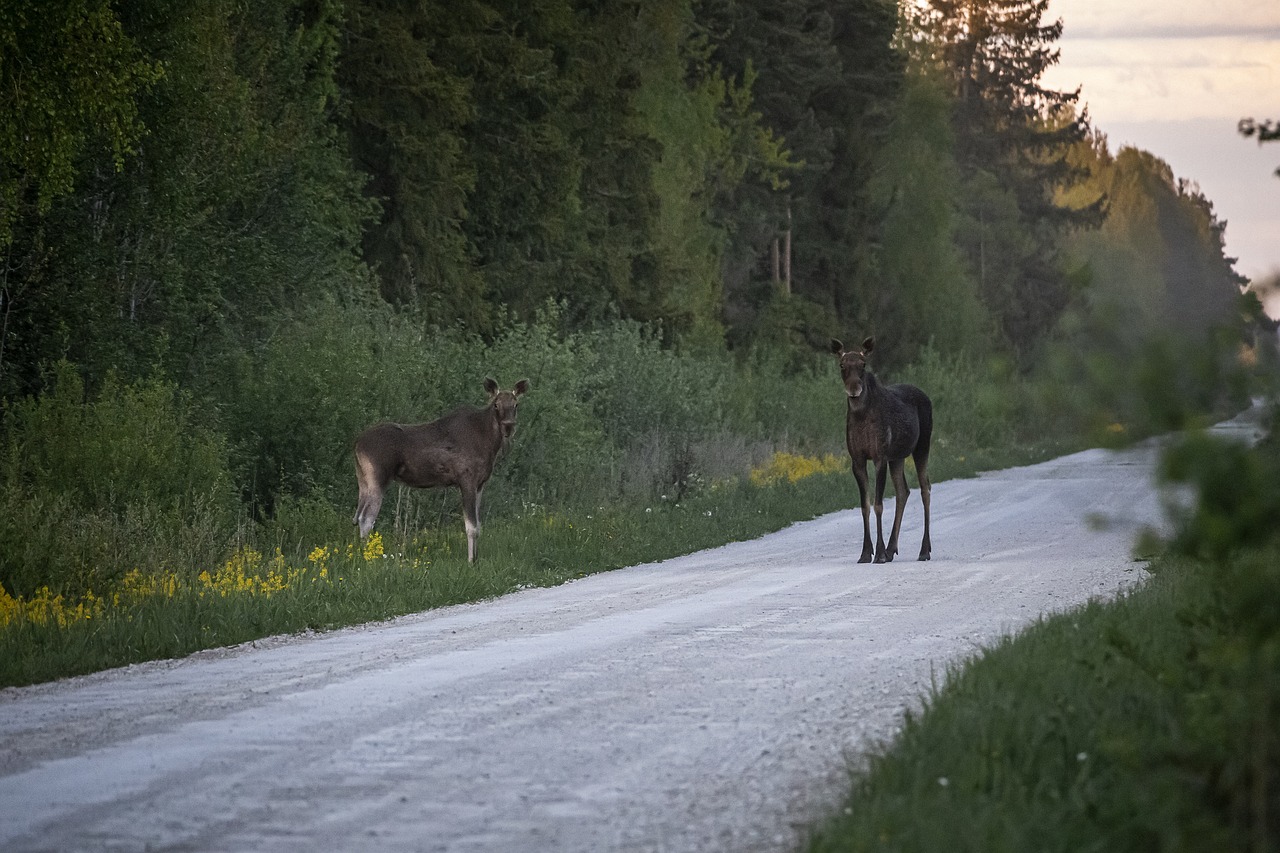The elk (Cervus canadensis), also known as the wapiti, is one of the largest species within the deer family, Cervidae, and one of the largest terrestrial mammals in its native range of North America, as well as Central and East Asia. It is often confused with the larger Alces alces, which is called moose in North America, but called elk in British English, and related names in other European languages (German Elch, Swedish älg, French élan). The name “wapiti” is used in Europe for Cervus canadensis. It originates from the Shawnee and Cree word waapiti, meaning ‘white rump’.
Elk range in forest and forest-edge habitat, feeding on grasses, plants, leaves, and bark. Male elk have large antlers which they shed each year. Males also engage in ritualized mating behaviors during the rut, including posturing, antler wrestling (sparring), and bugling, a loud series of vocalizations that establishes dominance over other males and attracts females. Although it is currently native to North America and central/eastern Asia, it had a much wider distribution in the past. Populations were present across Eurasia into Western Europe during the Late Pleistocene and survived into the early Holocene in southern Sweden and the Alps; the extinct Merriam’s elk subspecies ranged into Mexico. The elk has adapted well to countries where it has been introduced, including Argentina and New Zealand. Its adaptability may in fact threaten endemic species and the ecosystems into which it has been introduced.
Elk are susceptible to a number of infectious diseases, some of which can be transmitted to livestock. Efforts to eliminate infectious diseases from elk populations, largely by vaccination, have had mixed success. Some cultures revere the elk as having spiritual significance. In parts of Asia, antlers and their velvet are used in traditional medicines. Elk are hunted as a game species. Their meat is leaner and higher in protein than beef or chicken. Elk were long believed to belong to a subspecies of the European red deer (Cervus elaphus), but evidence from many mitochondrial DNA genetic studies beginning in 1998 shows that the two are distinct species. Key morphological differences that distinguish C. canadensis from C. elaphus are the former’s wider rump patch and paler-hued antlers.
[Vikipedia]
Elk and moose, both members of the species Alces alces, are majestic and iconic creatures of the deer family (Cervidae), inhabiting various regions across North America, Europe, and Asia. Despite their taxonomic classification within the same species, they exhibit notable differences in size, appearance, and habitat preferences.
Elk (Cervus canadensis):
Physical Characteristics: Elk, also known as wapiti, are impressive creatures with a robust build and distinctive antlers. They typically stand between 4.5 to 5 feet (1.4 to 1.5 meters) tall at the shoulder, with males (bulls) being larger and heavier than females (cows). Bulls can weigh between 700 to 1100 pounds (320 to 500 kilograms), while cows generally weigh between 450 to 600 pounds (200 to 270 kilograms).
One of the most striking features of elk is their formidable antlers, which are typically large and branched. Antlers of mature bulls can span up to 5 feet (1.5 meters) in width and weigh over 40 pounds (18 kilograms). These antlers are shed and regrown annually, with the size and complexity increasing as the bull matures.
Elk have a reddish-brown coat with a lighter-colored rump patch and neck mane. Their coat may darken during the winter months, providing insulation against the cold.
Habitat and Behavior: Elk are primarily found in forested and mountainous regions across North America, ranging from Canada down through the United States into northern Mexico. They are adaptable creatures, inhabiting a variety of ecosystems, including forests, meadows, and alpine tundra.
Elk are social animals, often forming herds consisting of females and their offspring, led by a dominant bull during the mating season. Outside of the breeding season, bulls may form bachelor groups or remain solitary.
Moose (Alces alces):
Physical Characteristics: Moose, the largest members of the deer family, are characterized by their massive size, long legs, and distinctive palmate antlers. They stand between 5 to 7 feet (1.5 to 2.1 meters) tall at the shoulder, with adult males (bulls) weighing between 800 to 1500 pounds (360 to 680 kilograms) and females (cows) typically weighing between 600 to 1000 pounds (270 to 450 kilograms).
The antlers of moose are broad and palmate, resembling the shape of a hand with outspread fingers. These antlers are shed and regrown annually, with mature bulls boasting impressive racks that can span up to 6 feet (1.8 meters) in width.
Moose have a dark brown coat, often with a lighter-colored mane on their neck and shoulders. Their thick fur provides insulation against the cold temperatures of their northern habitats.
Habitat and Behavior: Moose are primarily found in boreal and subarctic regions across North America, Europe, and Asia. They inhabit dense forests, wetlands, and marshy areas, where they feed on a variety of vegetation, including aquatic plants and shrubs.
Moose are solitary animals for most of the year, although they may form small groups during the mating season or when feeding in areas with abundant resources. Bulls are particularly solitary outside of the breeding season, while cows may be accompanied by their calves.
In summary, both elk and moose are magnificent members of the deer family, each with its own unique characteristics and adaptations suited to its specific habitat and lifestyle.
Views: 869
Subscribe to the newsletter:
